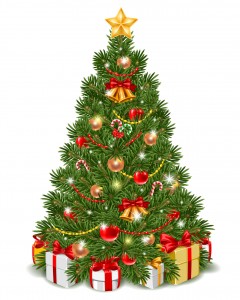It seems like there are always big holidays just around the corner, and if there’s one thing people love it’s a celebration.
Some people just love holidays for the sake of having them and don’t think too much about the deeper meaning of what we do. Others are a bit more curious.
Have you ever wondered why Easter has eggs and rabbits, even though they aren’t mentioned in the Bible?
Are you curious about why we have Christmas trees? Or why we celebrate Halloween with treats and pumpkins?
This may come as a shock, but pagans actually play a big role in many of our modern holiday celebrations.
Pagans and modern holidays
The traditional use of the word pagan doesn’t come from one religion.
Back in the times of the Romans, there were a lot of different religions being practiced. Pagan is a term that was used as a catch-all for most religions that didn’t fall in line with Judeo-Christian beliefs.
There have been books written about the complicated relationship Christian and pagans had, so for the sake of brevity in this post we’re going to keep things simple.
When Christianity was still in its infancy, they were vying for believers from other more popular religions. Many of these religions had a variety of holidays and feasts that went on throughout the year.
Eventually, some Christian holidays started to borrow symbols from other popular pagan holidays.
Some believe that this was a natural result of converts from other religions still doing old practices after they became Christians.
Others think this cultural exchange was purposefully done by priests to make their religion more appealing.
Regardless of how it happened, that’s why we see pagan symbols of prosperity and fertility in Christian holidays.
The fluffy rabbits and eggs we see every Easter come from the pagan festival of Eostre. Eostre was a northern goddess that had a rabbit as her symbol.
Christmas trees are most likely a continuation of the midwinter tradition of bringing greenery indoors to decorate homes in midwinter.
Christian holidays aren’t the only ones that have iconography from the pagans. There’s one popular holiday that people celebrate around the world that has pagan roots that they may not be aware of.
May Day and the Pagans
If you’re from America you may not know much about May Day, but if you’re European you’ve probably been to your fair share of May Day celebrations.
You’ve probably spent a few May Days being outside, having a picnic with friends, and of course, you took your turn around the maypole.
The meaning of modern May Day celebrations has changed as the years have gone on.
In the late 19th century May Day was chosen to be International Worker’s Day, so many people view May 1st as a day to honor workers and protest. For others, it’s a simple fun festival to enjoy the nice weather.
Ancient May Day celebrations were done to do much more than enjoy the weather, for pagans it was one of the most important holidays of the year.
Beltane
The word “Beltane” is the anglicized form of the Gaelic word for May Day.
Beltane was held at the midway point between the spring equinox and summer solstice. Beltane and Samhain would fall 6 months apart and were seen as the turning points of the year.
Beltane marked the beginning of the summer season. Cattle were taken from the spring pastures to the summer grazing fields.
Rituals were performed to protect the cattle, bless the fields and the people that worked them, and to encourage growth and welcome the new fertile season.
During this time special bonfires were lit because the smoke, flames, and ash they produced were thought to have special protective powers.
The fires are an important part of Beltane. People and a few select pieces of cattle would walk around the fire or between two bonfires for protection. All household fires would be extinguished and re-lit because of the fire’s importance.
These fires would be accompanied by large feasts and parties that entire villages and towns would participate in. Fairs and markets would be held, Beltane was easily one of the most important social events of the year.
People would decorate themselves and their houses with yellow mayflowers. Some would even have may day bushes.
Fertility was also a very important part of Beltane. Many of these rituals were done to not just bring fertility to nature or cattle, but to the people that celebrated it.
Some believe that the traditional maypole is actually a phallic symbol meant to celebrate fertility.
Does any of this sound familiar to you? Flowers, big celebrations, and in some places fires are still a big part of May Day.
The pagan beliefs may have died out, but like with other popular holidays, their symbolism lives on.
Celebrate May Day
May Day has changed as the centuries have passed. Many today view it as a simple celebration of spring, but there are plenty of pagans that haven’t forgotten the holiday’s powerful roots.
There are plenty of observant pagans and Wiccans that still honor the holiday’s ancient roots. If you want to celebrate on your own, there’s plenty you can do. You can celebrate it on your own, with a group of friends, or even your own family.
First, you’ll want to make your Beltane altar. Start off with a candle, some freshly cut branches and flower, and a statue of the goddess if you have one. After your altar is set up keep it maintained and feel free to pray in front of it.
If you have a big group of friends, you may want to consider having your own dance around the maypole.
Because Beltane was celebrated to bless crops and honor fertility, many people like to celebrate the holiday by planting flowers and trees. It’s a great way to honor the goddess, celebrate the holiday, and help the earth.
Finishing up
As you can see, pagan iconography and holidays are still a very big part of our lives.
If you want to learn more about May Day, Beltane, or other pagan holidays, consider educating yourself with some books we’ve picked out.


Speak Your Mind